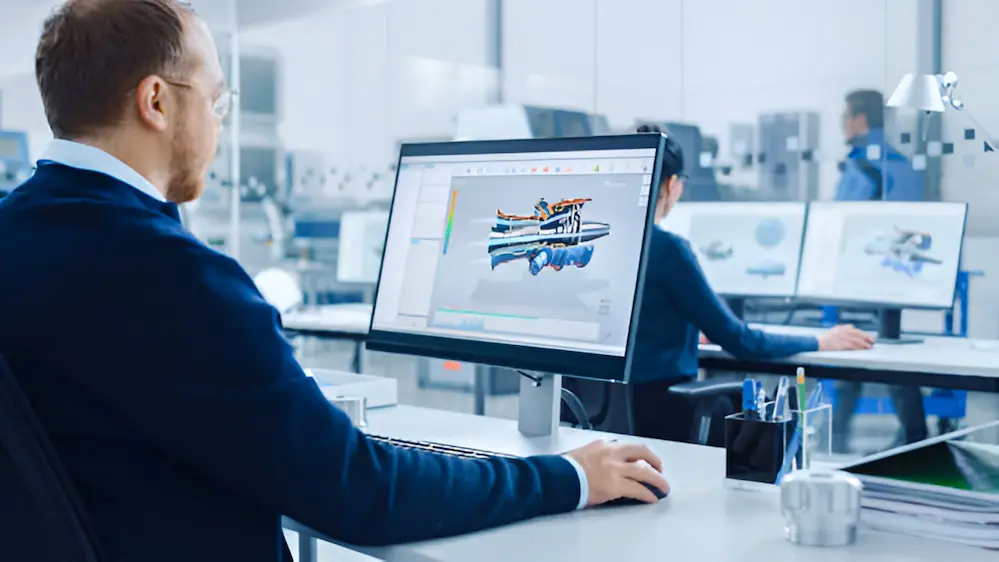The combination of computer aided design (CAD) and artificial intelligence (AI) is changing the way professionals approach modeling and drafting in the design and engineering fields In addition to increasing performance, AI-driven solutions are changing the benchmarks that mean CAD is accurate and efficient automation of manufacturing. This article explores how artificial intelligence (AI) software is changing CAD automation and provides insight into the benefits and potential future of this cutting-edge technology.
Enhancing Efficiency and Precision
Improving the accuracy and efficiency of CAD automation is one of the most important achievements of AI. The repeated procedures involved in traditional CAD methods can be laborious and prone to human mistake. These jobs can be automated by AI algorithms, guaranteeing precision and consistency.
For example, AI can automatically detect and fix design flaws, eliminating the need for human witnessing. For freelance CAD drafter who manage multiple projects and clients, this is especially helpful. They may focus more on innovation and less on tedious activities by streamlining their workflows with AI. Due to AI integration, AutoCAD drafting are also experiencing improvements in turnaround times and overall quality of deliverables.
Intelligent Design Assistance
Intelligent design support is provided by AI-powered technologies, greatly assisting in the design process. These technologies can improve layouts, make design suggestions, and even foresee certain problems before they happen. AI, for instance, is capable of analyzing a CAD model and suggesting structural alterations to boost efficiency or stability.
This feature is especially helpful for complicated projects where manual analysis would take a lot of time and effort. These astute recommendations can help CAD drafters increase the efficiency of their job and lower the risk of design errors. These AI tools are being more and more integrated into AutoCAD services to provide clients creative and efficient solutions.
Automated Design Generation
Another revolutionary development in CAD automation is AI-driven automated design generation. This entails employing AI to provide design variations according to user-specified limitations and conditions. In a small fraction of the time that a human designer would need, the software may produce several design options.
With the aid of this technology, CAD drafters may rapidly examine a multitude of design options and select the most appropriate option for their projects. Automated design creation gives AutoCAD drafters a competitive advantage and allows them to provide their clients with a wider range of solutions.
Predictive Maintenance and Error Detection
Beyond helping with design, AI can also predict maintenance needs and identify errors in CAD systems. AI algorithms are used in predictive maintenance to track the functionality of CAD software and hardware, identifying problems before they arise. By being proactive, we can reduce downtime and make sure the systems function properly.
On the other side, error detection entails using AI to examine CAD models in order to find probable mistakes that can result in poor design. AI assists in avoiding costly errors and rework by identifying these problems early on. These predictive and error-detection characteristics are advantageous to both CAD drafters and drafting services because they lead to more dependable and durable design outputs.
Enhancing Collaboration
AI is also essential for improving teamwork within design teams. The seamless sharing and integration of CAD files made possible by AI-powered collaboration technologies facilitates team members’ ability to collaborate regardless of where they are physically located. These solutions guarantee that everyone is in agreement, track changes, and offer real-time feedback.
This makes it simple for CAD drafters to work with clients and other stakeholders, guaranteeing that project needs are fulfilled effectively. These AI-enhanced collaboration tools can help AutoCAD drafting teams collaborate better, which will result in more successful and coherent project solutions.
Future Potential of AI in CAD Automation
AI has enormous potential for CAD automation in the future. We may anticipate increasingly more advanced and potent tools that improve the design process as AI technologies advance. Future developments might include enhanced simulation capabilities, more user-friendly user interfaces, and deeper integration with other digital tools and platforms.
CAD drafters will soon have access to more potent tools that enable them to tackle more difficult jobs with ease. AutoCAD drafting services will be able to maintain its lead in a cutthroat industry by providing clients with more creative and effective solutions. The continued incorporation of AI into CAD automation holds the potential to transform the engineering and design landscape, spurring advancement and creativity in the sector.
Conclusion
Without a doubt, artificial intelligence is transforming CAD automation, bringing significant gains in productivity, accuracy and creativity. A.I. The future of CAD automation is bright, with exciting opportunities for both AutoCAD and CAD drafters as AI technology develops. Adopting AI in CAD automation is not merely a fad; rather, it is an essential development to maintain competitiveness and attain design and engineering excellence.




